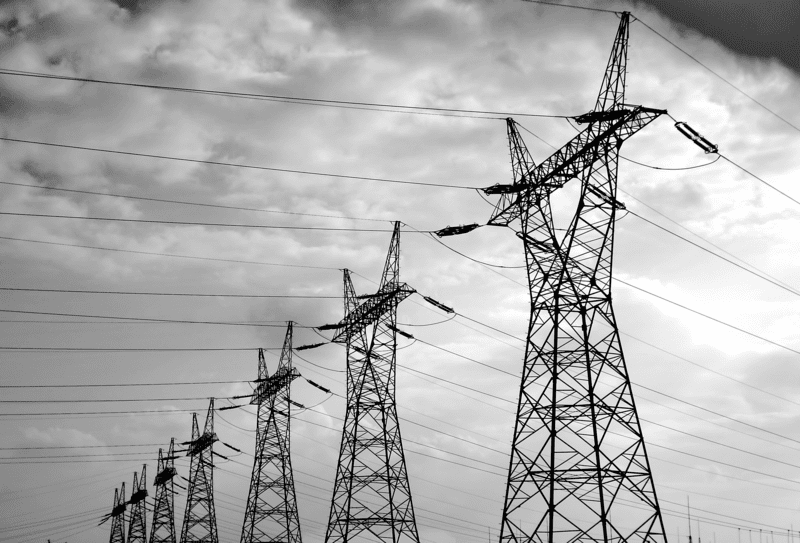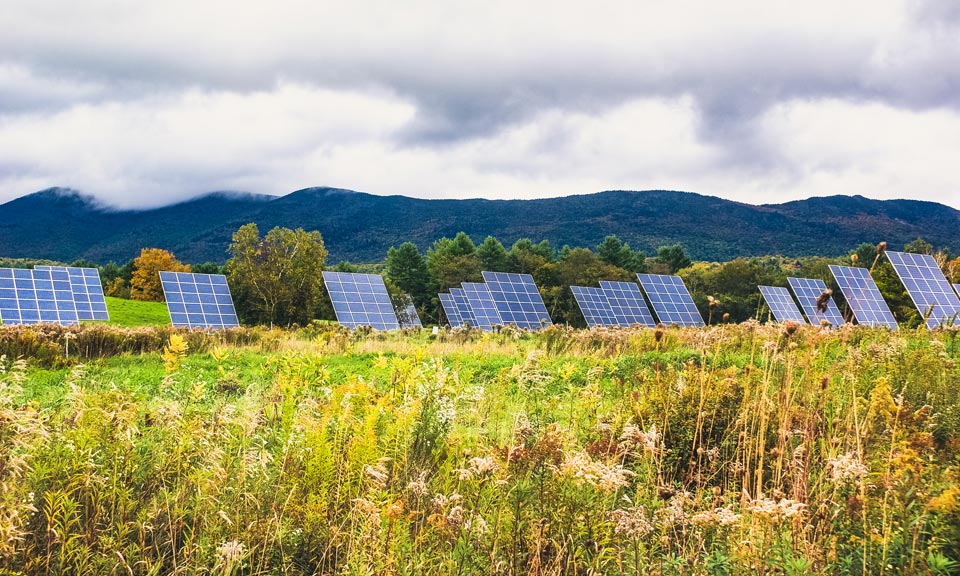India to update climate commitment with 50% renewable power mix pledge

India is to update its Nationally Determined Contribution (NDC) under the United Nations' Framework Convention on Climate Change to include a 50% target for renewables in the power mix by 2030, the Environment Ministry said Aug. 3.
The update confirms some, but not all, of Indian Prime Minister Narendra Modi's COP26 pledges made in November last year.
Then Modi pledged to reach net-zero emissions by 2070 and have 500 GW of renewables by 2030. India would strive to get 50% of its energy from renewable sources by 2030, reducing total projected carbon emissions by one billion tonnes, he said.
"India now stands committed to reduce emissions intensity of its GDP by 45% by 2030, from 2005 level and achieve about 50% cumulative electric power installed capacity from non-fossil fuel-based energy resources by 2030," the Ministry said.
There was no reference to the 500 GW renewables capacity or one billion tonne CO2 reduction goals, although the updated NDC is yet to be officially published.
India's renewables installed capacity now stands at 168 GW, which is 42% of the total power capacity of 404 GW, Power Ministry data showed.
The NDC would be implemented via government programs with support from states and union territories, the Ministry said without giving details.
The government had launched several programs to scale up India's adaptation and mitigation efforts, the Ministry said.
For instance, Indian Railways' net-zero emissions by 2030 alone would abate 60 million mt CO2 annually, it said.
In its previous NDC India had committed to reduce emissions intensity by 33%-35% from 2005 levels, with non-fossil fuel sources accounting for 40% of the generation mix by 2030.
Under Platts Analytics' Reference Case, India's power generation emissions are seen increasing from 1.28 billion mt in 2022 to 1.61 billion mt in 2050.
Under a scenario putting India on course to meet Paris Agreement goals, the country's CO2 emissions from power generation would need to peak at 1.4 billion mt in 2023 before falling to 1.18 billion mt in 2030 and 997.46 million mt by 2050.
The Environment Ministry called for funding assistance to deliver on the updated plans.
"Providing new and additional financial resources as well as transfer of technology to address the global climate change challenge are among the commitments and responsibilities of the developed countries under UNFCCC and the Paris Agreement," it said.
India needed its "due share" of international finance and technological support, it said.
In the run up to COP26 the UK presidency admitted wealthy nations had failed to honor a pledge to provide $100 billion a year of climate support for less wealthy nations by 2020.
The earliest the target cold be achieved was 2023, according to analysis by the Organization for Economic Cooperation and Development.
Data from India's Central Electricity Authority, meanwhile, showed India's fossil-based thermal generation up 24% year on year in June to some 106 TWh.
Renewable generation in May, the latest data available, was at 21 TWh, up 44% YoY, accounting for around 14% of the generation mix.
INDIA: GENERATION MIX IN MAY (TWh)
Source: Central Electricity Authority
News
Moment of truth looms for European green hydrogen investments Energy transition highlights: Our editors and analysts bring you the biggest stories from the industry this week, from renewables to storage to carbon prices. Time is running out to get on track with Europe's ambitious 2030 hydrogen production targets as developers due to take final investment decisions battle macroeconomic headwinds, industry representatives said at the Reuters Hydrogen conference in Amsterdam. Recent years have seen a multitude of project announcements, pre-front end engineering design studies, FEED studies and preliminary investments, though FIDs have been scarce. “There are some board rooms that are getting a little bit impatient by now,” Rabobank Executive Director Hyung-ja de Zeeuw said April 9. “If you think that we’ve only got six years left until 2030, I guess 2024 is going to be a key year for clean hydrogen projects here in Europe.” Around 4% of announced clean hydrogen projects in Europe have taken FIDs, according to Hydrogen Council Director Policy and Partnerships Daria Nochevnik. Price of the week: Eur4.50/kg The price ceiling for the first pilot auction under the European Hydrogen Bank mechanism. Results will be announced April 30, with the fund expected to clear well below the cap. Editor’s pick: Premium and free content SPGlobal.com Biden's carbon capture plans inch closer to reality amid uptick in well permits The Biden administration's ambition to capture carbon dioxide on a large scale and inject it back into the ground may have seemed daunting one year ago with only two CO2 storage facilities in the US. But a boost in federal spending on the technology in 2021 and 2022 may finally be bearing fruit after a sudden uptick in permits, according to industry watchers. Australia to unveil new plan for clean energy, green manufacturing: PM Australia will unveil a new plan in 2024 to support clean energy and green manufacturing projects to compete better against other nations’ subsidy schemes such as the US’ Inflation Reduction Act to draw investments in clean fuels, Prime Minister Anthony Albanese said, in what is being seeing as a pointer to big new fund allocations coming up. Escalating geopolitical tensions may give carbon market a key role to play: GenZero Carbon markets will be most critical in a scenario where global climate action is fragmented and geopolitical tensions are at their highest, as opposed to a scenario of full climate cooperation where carbon markets are least needed, Singapore’s state-owned decarbonization investment platform GenZero said. Platts Connect European Hydrogen Bank pilot auction to clear well below Eur4.50/kg price ceiling The first pilot auction for green hydrogen production under the EU’s European Hydrogen Bank facility will clear comfortably below the price ceiling of Eur4.50/kg ($4.89/kg), Innovation Fund policy officer Johanna Schiele said April 10. The results of the first Eur800 million auction will be released on April 30, Schiele said. Hydrogen market developing in New York; regulatory, power market challenges remain Using hydrogen to generate power in New York does not currently add up economically, but there is reason for optimism as the technology to do so will likely be needed in some capacity to help meet state decarbonization goals, experts said. China’s CEIC starts construction of 100,000 mt/year capacity green ammonia project China Energy Investment Corporation, one of the country’s largest state-owned energy companies, has started construction of its renewable ammonia project in Cangzhou in the eastern province of Hebei with a planned annual production capacity of 100,000 mt, likely to be completed by Q4 2025.
News
US Solar eclipse expected to significantly reduce solar power output in several markets Energy transition highlights: Our editors and analysts bring together everything you need to know about the industry this week, from renewables to storage to carbon prices. A total solar eclipse will cross North America on April 8, passing over Mexico, the US and Canada, causing significant reductions in solar power plant output with the greatest impacts occurring in the Electric Reliability Council of Texas and PJM Interconnection power markets. An annular eclipse obscures most of the sun except for a halo of sunlight around the edge of the moon’s dark disc, while during a total eclipse the entirety of the sun will be blocked by the moon. In Dallas, the partial eclipse will begin at 12:23 pm CT, with maximum totality occurring at 1:42 pm and the partial eclipse will end at 3:02 pm, according to the National Aeronautics and Space Administration. Maximum totality will reach Cleveland at 3:15 pm ET, Buffalo at 3:20 pm, and Caribou, Maine at 3:33 pm. Solar power production in ERCOT is expected to drop to 3 GW generated during the hour of totality versus the roughly 18 GW that is usually generated during that same time of day on a clear sky day in April, according to Maxar Technologies, an advanced forecasting company that provides data to US power grid operators. As the moon’s shadow moves north through the PJM footprint, solar power output is expected to drop to around 1.6 GW during the hour of totality compared with roughly 7GW on a clear sky day in April, a Maxar spokesperson said in an email. Even under cloudy skies, PJM is preparing for temporary losses of at least 80% to 85% of the production from the approximately 8.2 GW of grid-connected solar or metered solar resources that are part of the PJM solar generation fleet in early April, the grid operator said in a media release. Price of the week: On the Intercontinental Exchange during April 5 trading, ERCOT North Hub day-ahead on-peak rose about $17.50 from its previous settlement to $27/MWh and its corresponding real-time peak contract jumped about $19 to around $29.50/MWh for April 8 delivery. Editor’s pick: Premium and free content SPGlobal.com INTERVIEW: Building a credible carbon market takes time; 'bear with us', says ICVCM A step-by-step approach to informing the market about which project methodologies meet high-quality carbon credit thresholds is considered the best way forward given the high number of methodologies involved, the Integrity Council for the Voluntary Carbon Market said. The ICVCM confirmed that carbon credit programs from American Carbon Registry, Climate Action Reserve and Gold Standard had met its high-quality Core Carbon Principle labels. China kicks off consultation on expanding compliance carbon market to cement sector China has kicked off public consultation on drafting guidelines around emissions accounting and verification for the country's cement sector, laying the foundation for its inclusion in the national compliance carbon market, the Ministry of Ecology and Environment said in a notice late April 3. Thailand's Bangchak, Japan's Sumitomo join forces for green UCO-to-SAF supply chain Thailand-based energy firm Bangchak and Japan's Sumitomo Corp. have signed a cooperative framework agreement for the procurement of used cooking oil and the sale of sustainable aviation fuel, the companies said in an April 3 joint release. Platts Connect Denmark paves way for hydrogen pipeline exporting surplus wind to Germany Denmark is paving the way for state financing for the Jutland hydrogen backbone pipeline to export surplus wind power to Germany, the energy ministry said. Political parties agreed five framework conditions that need to be met for grid operator Energinet to go-ahead with the project including a 1.4-GW or 44% of total capacity booking requirement by private companies. China’s domestic renewable energy certificate trade volume up tenfold in 2023 The annual trading volume of China’s domestic renewable energy certificates, called Green Electricity Certificates, increased almost tenfold to 96 million certificates in 2023, a record high for a year, from 9.69 million certificates in 2022, data from the country’s GEC trading platform showed. Fortescue misses FID date for key renewable hydrogen project under Genex PPA Fortescue Future Industry has missed the deadline for final investment decision (FID) for a key renewable hydrogen/ammonia project in Australia, thus failing to meet a buyer’s condition in a Power Purchase Agreement (PPA) with Genex Power, Genex said April 2.

News
A total solar eclipse will cross North America on April 8, resulting in heavily reduced solar power plant output. It will differ from an annular eclipse in that the sun will be entirely blocked by the moon, rather than partially blocked with a visible halo of sunlight. Power markets in Texas and the Mid-Atlantic region are expected to see the biggest impact in solar-powered generation. Related feature: US solar eclipse expected to significantly reduce solar power output in several markets (subscriber content) Click here for the full-size infographic

News
With rapid penetration of solar photovoltaic, wind and battery energy storage, power systems are shifting away from conventional synchronous generators towards power electronics, i.e., inverters, which may lead to risks of grid instability. Grid-forming inverter technology has been developed to support grid operation by providing similar capabilities as synchronous generators. Related report: Grid-forming technology report, 2024 (subscriber content) See the full size infographic here